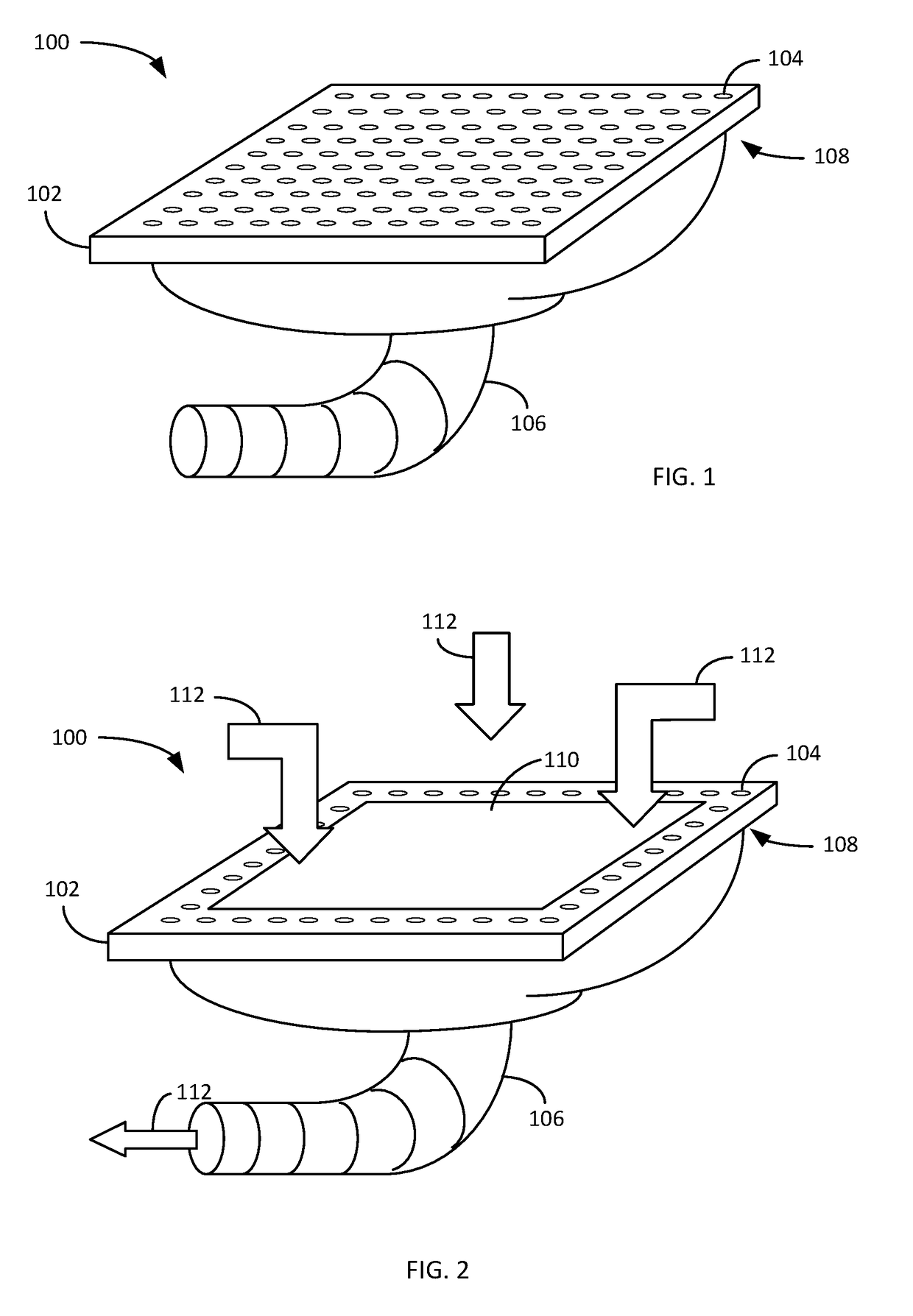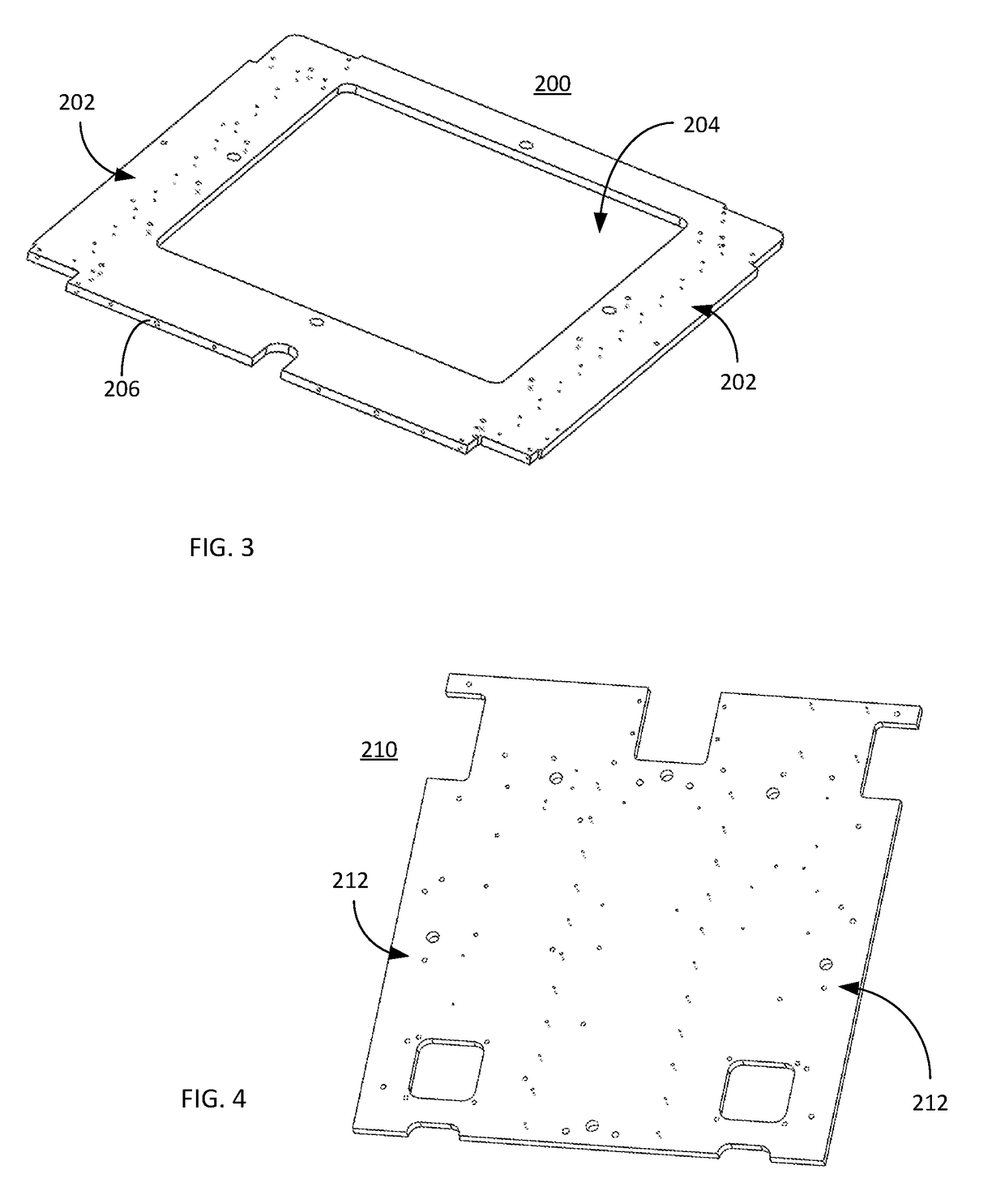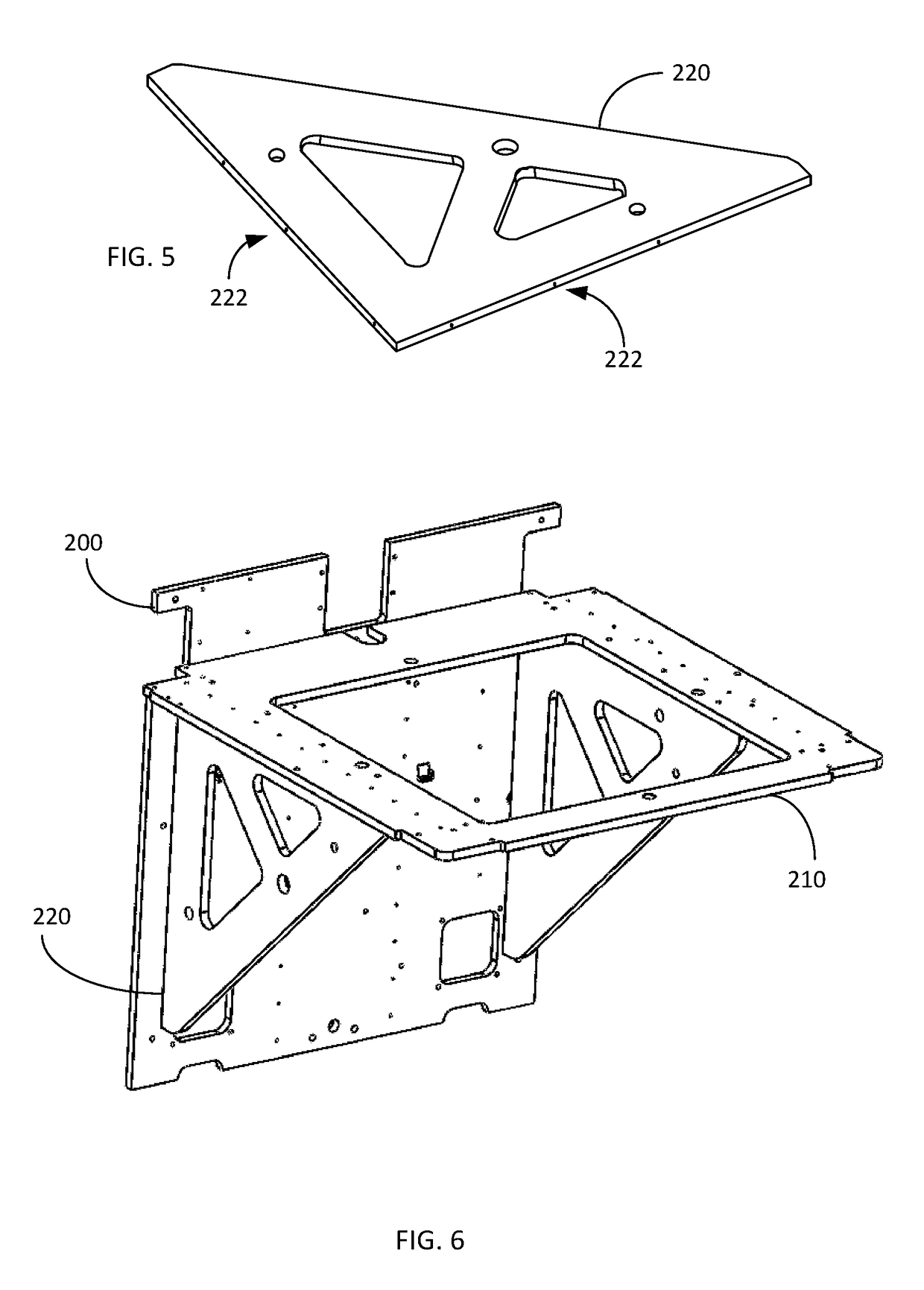Three-dimensional printer
a three-dimensional printer and printer body technology, applied in the field of three-dimensional printing, can solve the problems of increasing assembly costs and time, reducing the efficiency of printing and assembly, and reducing the complexity of printer assembly, so as to achieve the effect of improving assembly, adding additional printing and machining costs, and being easy to remov
- Summary
- Abstract
- Description
- Claims
- Application Information
AI Technical Summary
Benefits of technology
Problems solved by technology
Method used
Image
Examples
Embodiment Construction
[0033]FIG. 1 illustrates a perspective view of a print bed 100 providing for improved 3D printing. The print bed 100 includes a top layer 102 having a plurality of air holes 104 therein. A vacuum hose 106 is connected to a bottom layer 108.
[0034]The print bed 100 may be composed of any suitable material, such as but not limited to metal or plastic. The bed 100 allows for airflow through the holes 104. Varying embodiments allow for different sizing and placement of air holes, including one embodiment may include pin-prick size air holes, whereas other embodiments may include larger holes. The specific sizing of the air hole 104 is not limiting, such that the air hole 104 in combination with the air hose 106 provides for air flow therethrough.
[0035]While not directly illustrated, the air hose 106 connects to a vacuum or other type of air suction device. The vacuum may be any suitable type of device operative to pull air in through the air holes 104 and down the tube 106. In varying em...
PUM
| Property | Measurement | Unit |
|---|---|---|
| Heat | aaaaa | aaaaa |
| Stability | aaaaa | aaaaa |
Abstract
Description
Claims
Application Information
 Login to View More
Login to View More - R&D
- Intellectual Property
- Life Sciences
- Materials
- Tech Scout
- Unparalleled Data Quality
- Higher Quality Content
- 60% Fewer Hallucinations
Browse by: Latest US Patents, China's latest patents, Technical Efficacy Thesaurus, Application Domain, Technology Topic, Popular Technical Reports.
© 2025 PatSnap. All rights reserved.Legal|Privacy policy|Modern Slavery Act Transparency Statement|Sitemap|About US| Contact US: help@patsnap.com



